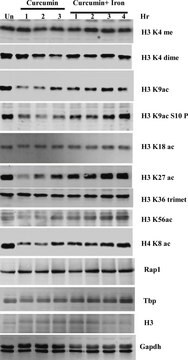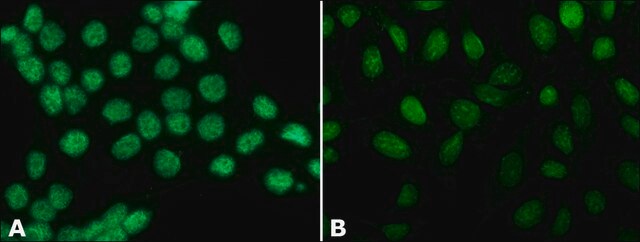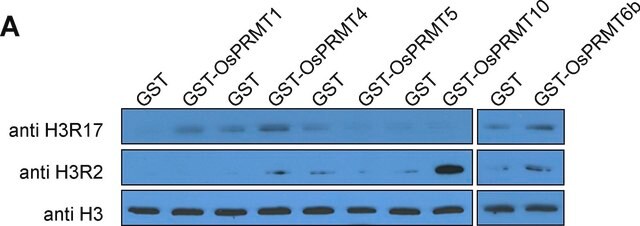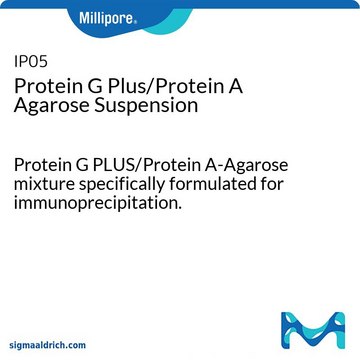PLA0148
Anti-Histone H3.1 Antibody
from rabbit
Synonim(y):
H3/A, H3FA, H3a, Histon H3/b, Histon H3/c, Histon H3/d, Histon H3/f, Histon H3/h, Histon H3/i, Histon H3/j, Histon H3/k, Histon H3/l, Rodzina histonów H3, członek A, histon 1, histon H3/a
About This Item
Polecane produkty
Nazwa produktu
Rabbit anti-Histone H3 Antibody, Affinity Purified, Powered by Bethyl Laboratories, Inc.
pochodzenie biologiczne
rabbit
Poziom jakości
forma przeciwciała
affinity purified immunoglobulin
rodzaj przeciwciała
primary antibodies
klasa czystości
Powered by Bethyl Laboratories, Inc.
reaktywność gatunkowa
human
metody
immunohistochemistry: 1:200-1:1,000
immunoprecipitation (IP): 2-10 μg/mg
western blot: 1:2,000- 1:10,000
nr dostępu
NP_003520.1
Warunki transportu
wet ice
temp. przechowywania
2-8°C
docelowa modyfikacja potranslacyjna
unmodified
informacje o genach
rabbit ... Histone H3(8350)
Opis ogólny
Immunogen
Działania biochem./fizjol.
Postać fizyczna
Inne uwagi
Oświadczenie o zrzeczeniu się odpowiedzialności
Nie możesz znaleźć właściwego produktu?
Wypróbuj nasz Narzędzie selektora produktów.
Kod klasy składowania
10 - Combustible liquids
Temperatura zapłonu (°F)
Not applicable
Temperatura zapłonu (°C)
Not applicable
Wybierz jedną z najnowszych wersji:
Certyfikaty analizy (CoA)
It looks like we've run into a problem, but you can still download Certificates of Analysis from our Dokumenty section.
Proszę o kontakt, jeśli potrzebna jest pomoc Obsługa Klienta
Masz już ten produkt?
Dokumenty związane z niedawno zakupionymi produktami zostały zamieszczone w Bibliotece dokumentów.
Nasz zespół naukowców ma doświadczenie we wszystkich obszarach badań, w tym w naukach przyrodniczych, materiałoznawstwie, syntezie chemicznej, chromatografii, analityce i wielu innych dziedzinach.
Skontaktuj się z zespołem ds. pomocy technicznej








